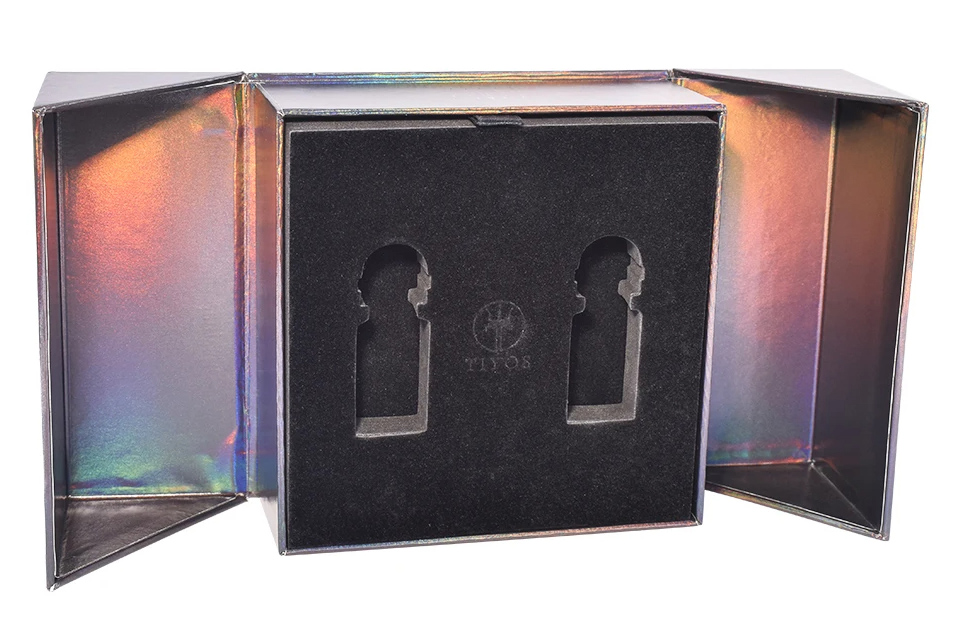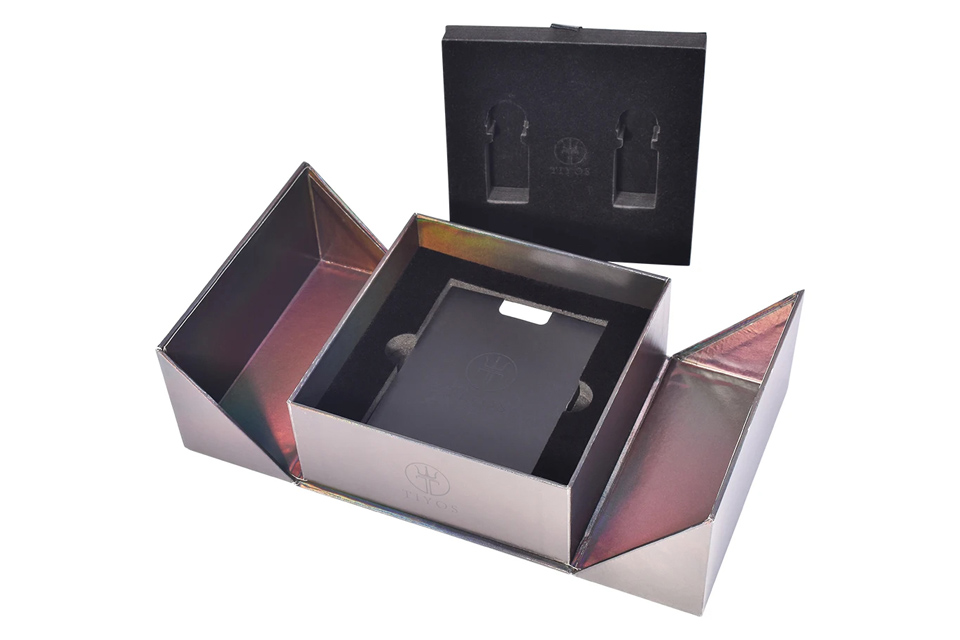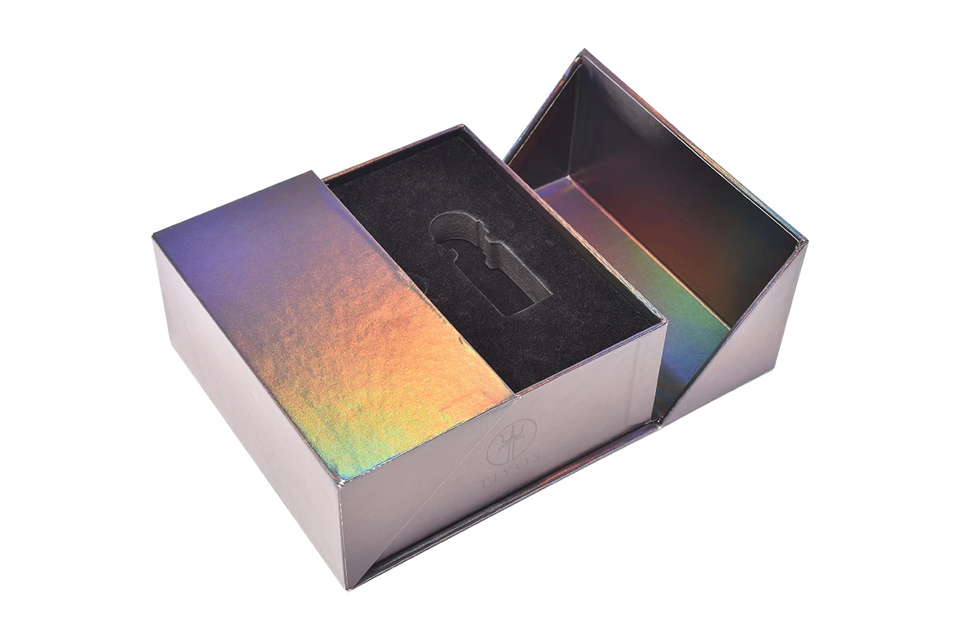Folding cartons: Ecological revolution and commercial upgrading of retail packaging
Introduction
In the wave of the global packaging market expanding at an annual growth rate of 6.8%, folding cartons have become a nuclear weapon for brands to break through with a 72% repurchase rate. From the ritual unboxing of Tiffany Blue to the symbolic communication of Apple's minimalist packaging, this traditional form of tea packaging originated in the 19th century is reconstructing retail rules through material revolution, printing black technology and consumer psychology. This article reveals the eight business codes for folding cartons to win the market, showing how it can transform environmental responsibility into brand premium and packaging costs into traffic entrances.
1. Green awakening reshapes packaging value
After the implementation of the EU SUP ban, the penetration rate of folding cartons in the food and beverage field soared by 32%. Coca-Cola Europe uses water-based barrier coating technology to reduce the carbon footprint of carton packaging by 43% and increase the average customer price of environmentally friendly premium products by 18%. This packaging, made of FSC-certified pulp and soy ink, achieves a 98.7% biodegradability rate under composting conditions, perfectly meeting the environmental protection requirements of the "plastic ban" in 85 countries around the world.
McDonald's "Big Mac Carton Revolution" is even more inspiring: 7-time recycled fiber combined with UV-curable ink, while achieving zero plasticization, reduces the packaging cost of a single store by 29%, while increasing the average customer price by 9.7%. Data shows that for brands that use traceable environmentally friendly cartons, consumers' willingness to pay increases by 23%, confirming the monetization ability of green packaging.
2. Packaging Value Equation of Generation Z
Neuroscience experiments reveal that the three-dimensional display area of folding cartons increases by 217% compared to traditional packaging, and the shelf stay time is extended to 9.2 seconds. L'Oreal's "Diamond Cut" gift box has 57 laser die-cut refractive surfaces, and has received 230 million exposures on social media, with a 31% increase in conversion rate. This "visual economics" effect makes packaging a three-dimensional billboard for brands to communicate with consumers.
According to a survey by the Sustainable Packaging Alliance, 74% of consumers are willing to pay a 10% premium for environmentally friendly packaging. The Allbirds running shoe box has a built-in blockchain traceability QR code, which visualizes the carbon footprint of paper and attracts 68% of millennial users to post their orders. Folding cartons are evolving from functional containers to "environmentally friendly ID cards", carrying the value expression needs of Generation Z.
3. Digital printing reconstructs brand narratives
The temperature-sensitive color-changing ink equipped with the HP Indigo 7.0 press enables Nongfu Spring's zodiac paper boxes to present different blessings according to the temperature. This technology reduces the cost of small-batch customization to $0.03 per box, driving personalized orders to increase by 240% year-on-year. The flexible production capacity of digital printing makes folding cartons a brand's private domain traffic entrance.
Shiseido's 2025 Sakura Limited Gift Box uses AR invisible code technology, and mobile phone scanning triggers 3D cherry blossom rain animation. The combination of this NFC chip and conductive ink extends the packaging interaction time to 4.7 minutes and increases customer retention by 58%. When packaging becomes the entrance to the metaverse, the value assessment model of folding cartons has undergone a fundamental change.
4. Structural innovation creates an experience economy
IKEA's "Flat to Feast" picnic box can be transformed into a plate stand and candlestick through a pre-crease design. This technological innovation, which originated from the Japanese art of origami, has triggered 230 million challenges on TikTok, directly driving a 23% sales growth in the Nordic market. Structural engineers have found that a 0.1 mm indentation angle adjustment can increase the load-bearing capacity by 300%, breaking the traditional contradiction between the strength and aesthetics of cartons.
The "seed carton" launched by Lush cosmetics is even more subversive: consumers can grow customized fragrant herbs by soaking the used cartons in water. This "packaging is the product" concept has increased the brand's repurchase rate by 41%, successfully converting packaging costs into customer assets.
5. Material revolution breaks through physical limits
The breakthrough in nanocellulose coating technology has enabled the compressive strength of folding cartons to reach 15kg/cm², surpassing ordinary plastic packaging by 32%. The water-based barrier coating developed by German chemical giant BASF achieves 100 hours of waterproof performance at a thickness of 0.03 mm, completely breaking the moisture-prohibited zone of paper packaging.
3D microstructure printing technology brings a tactile revolution: through the three-dimensional stacking of UV ink, a tactile texture of 0.05 mm can be formed on the paper surface. After the application of this technology to Chanel No. 5 perfume box, the customer's unpacking time was extended from 7 seconds to 23 seconds, and the emotional resonance index increased by 89%.
6. Dimensionality reduction of cost control
The intelligent upgrade of the automated production line has enabled the die-cutting accuracy of folding cartons to reach ±0.1mm, and the material loss rate has dropped from 8% to 1.2%. Data from Amazon's logistics system shows that folding cartons reduce storage space by 37% compared to traditional packaging, and the unit logistics cost has dropped by 19%. This "flattening revolution" is reshaping the efficiency of the global supply chain.
Even more disruptive is the "zero inventory printing" model: the combination of the cloud design platform and the distributed digital printing network enables brands to achieve 72-hour global distribution. This technology helped the DTC brand Glossier reduce packaging costs by 68% and increase the speed of new product launches by 3 times when entering the Asian market.
7. Super conversion of cultural symbols
The religious communication of Apple's minimalist packaging proves that when packaging is simplified to the extreme, it can become a brand symbol. The video of opening its pure white paper box has been played more than 2.7 billion times on YouTube, deriving the "unboxing ASMR" subdivided content category. This symbolic communication transforms packaging costs into brand assets and realizes exponential amplification of marketing value.
The "Thousand Miles of Rivers and Mountains" tea box of the Palace Museum Cultural and Creative Industry shows oriental wisdom: through multi-layer hollow structure and mineral pigment printing, the artistic conception of ancient paintings is reproduced in a 15cm³ space. After the design won the Red Dot Award, the product premium rate reached 300%, confirming the commercial value of cultural empowerment.
8. Closed-loop construction of sustainable ecology
The world's first paper box recycling system "BoxLoop" has been implemented in Europe. Through RFID chip tracking, the average number of paper boxes is 7.3 times, and the life cycle is extended by 400%. Brands participating in the system can obtain carbon credit trading income and build a business closed loop of "environmental protection investment-carbon assets-cash flow".
Even more imaginative is the "carton as a service" model: Unilever has launched a rentable smart medicine box with built-in sensors to monitor medication usage. Consumers pay a monthly service fee to get a continuously upgraded packaging experience, turning cartons from a cost item into a continuous source of income.
Conclusion
When folding cartons break through the boundaries of physical performance, when printing technology connects the virtual and real worlds, and when packaging costs are transformed into digital assets, this packaging revolution that began with environmental protection demands is evolving into a war of brand value upgrades. From nanocellulose coating to AR invisible code, from origami mechanics to carbon credit trading, folding cartons use eight technical fulcrums to leverage the trillion-level market. In the future retail battlefield, whoever wins the packaging wins the world - and folding cartons are providing brands with the lowest cost value transition channel.
 English
English Español
Español Português
Português Pусский
Pусский Français
Français Deutsch
Deutsch 日本語
日本語 한국어
한국어 Italiano
Italiano عربى
عربى


